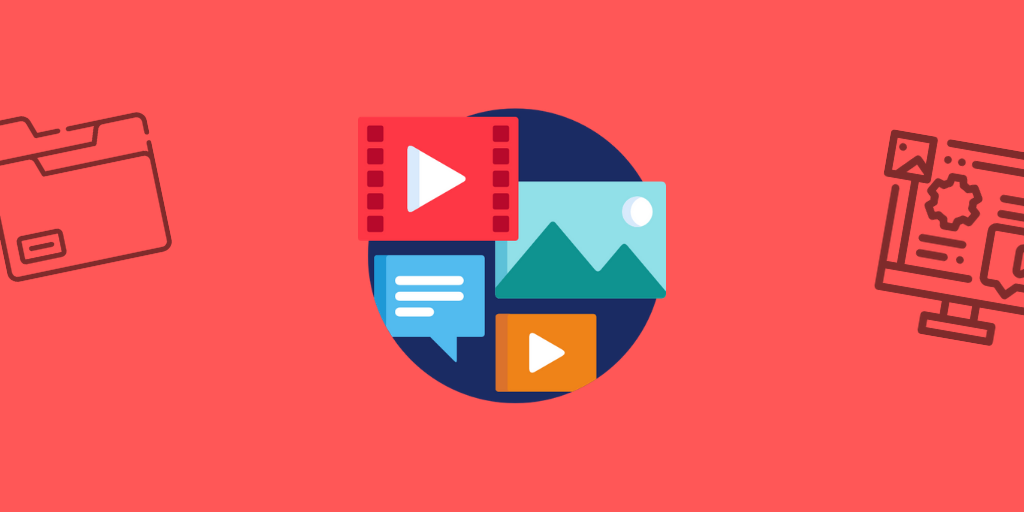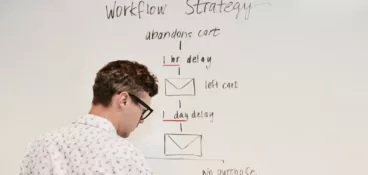Marketing experts have to manage different campaigns, creative projects, and all involved stakeholders. Additionally, they also have to make timely decisions, change focus, and manage marketing materials while maintaining a productive workflow.
Keeping track of all these resources can be quite demanding, even for experienced marketers. This is where marketing resource management can make your life easier.
This article highlights how marketing resource management takes marketing operations to the next level of asset management, enhances workflows, and creates better results.
What is marketing resource management (MRM)?
A resource is an asset available to the company, which can be used by a marketing department to continue its operations and function properly. A resource can take many forms, such as budget, staff, materials, computers, technologies, or even digital assets (including product photos and brand guidelines).
Therefore, the term “marketing resource” describes all assets that can be used by the marketing function. Marketing resource management rearranges all marketing resources, in order to achieve the best possible outcome at the lowest effort and cost.
Marketing resource management tools are software applications that help implement an MRM strategy. MRM strategies both facilitate long-term projects (such as a new product launch) and streamline daily routine tasks.
Why should you use marketing resource management software?
You might ask yourself why your marketing department needs an MRM system. The answer is simple: An MRM system helps a marketing team speed up processes, save time, lower costs, and achieve better ROI results.

A thorough MRM strategy can help improve operational marketing processes and implement guidelines more efficiently via the following:
Efficient planning
Thanks to an MRM system, decision-makers obtain a bird’s eye view of all marketing activities. This benefit makes budgeting a lot easier and provides new perspectives on how to use all available resources.
Cut extra costs
MRM solutions give marketing managers a deeper view of every aspect of a project. This helps them with budget tracking as they can see what costs are spent, what processes are causing increased costs, and where costs can be saved.
Streamlines workflow
By aligning people, setting milestones, tracking works-in-progress, and setting deadlines, an MRM system helps decision-makers create, control, and streamline workflows.
Campaign measurement
With MRM, managers can locate and fix operational bottlenecks and evaluate the outcome of specific campaigns according to KPIs (such as creation times, costs, and performances).
Seamless collaboration
Setting up efficient means of collaboration inside and across teams is crucial to successful MRM. Tools such as Filestage facilitate the content review and approval process, in order to save time and reduce bottlenecks.
Brand compliance
As an MRM system centralizes all marketing activities in one location, the output is more consistent in terms of images, fonts, typography, and brand voice. This is great for brand management.
How does MRM work?
MRM helps marketing teams to address and manage daily tasks and marketing activities. A typical MRM solution has a wide range of features that make it easy for marketing leaders to manage their operations.
Here are some of the features a good marketing resource management software should have:
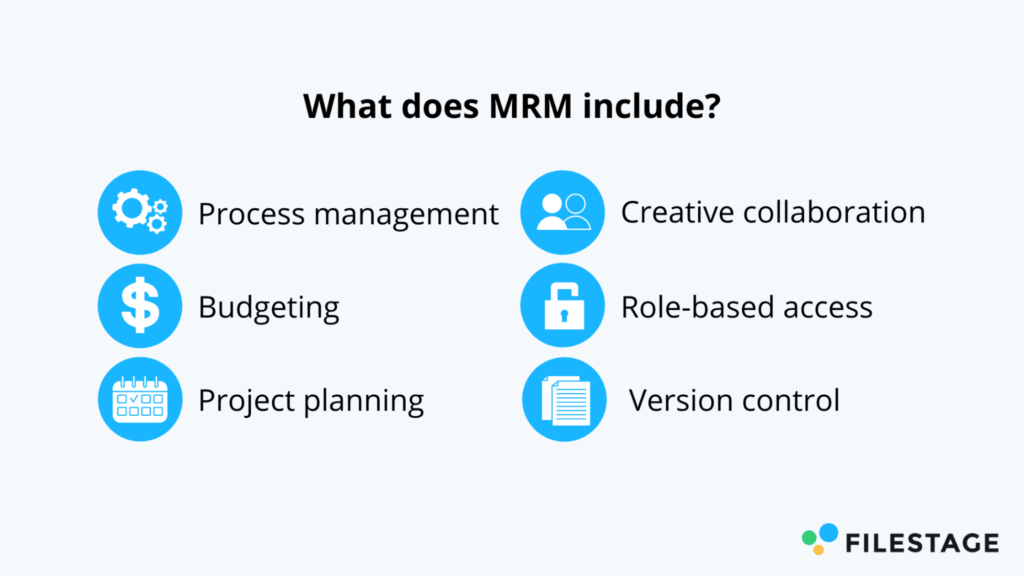
- Process management: helps the marketing department to visualize workflows, review production processes, and identify bottlenecks and any problems with team members.
- Budgeting: for easy budget and asset tracking and monitoring during a project.
- Project planning: helps the entire marketing team with strategic planning and execution of projects on time. Includes task allocation to staff, media planning, management of freelancers, vendors, and other external agencies.
- Creative collaboration: for file sharing, digital asset management, effective collaboration, content management, event coordination, online proofing, and approval from team members and stakeholders.
- Role-based access: to ensure the right people have permission and access to the right information and assets for a particular project, to keep them on the same page.
- Version control: to reference and audit historical data and information accuracy.
MRM aims to help teams complete their marketing projects through effective workflow management and using all resources more efficiently.
Who needs a marketing resource management solution?
All marketing departments, regardless of size, would benefit from marketing resource management. This technology is vital for marketing teams that often collaborate with other departments and external stakeholders for project management.
Marketers
Marketers are the forces behind the strategies, product launches, and campaigns that an organization puts out. They work to empower creators, engage internal and external stakeholders, and ensure all resources are available for the project. These professionals need MRM systems to manage their daily tasks and review all existing processes for better results.
Content Creators
Content creators typically require a creative workflow and don’t want to deal with long communication chains when creating marketing content. These creatives would benefit from MRM tools that bundle all the required information and feedback from stakeholders in one place. This way, they can revise and improve marketing content easily and fast.
Reviewers
Reviewers want to be updated and give feedback on project content. An MRM solution aims to keep all communication chains in one place and creates a seamless performance management and review process for these professionals.
How to come up with a marketing resource management strategy
As we mentioned earlier, marketing assets can include budget, people, third parties, and processes. The goal of an MRM strategy for leading brands is to restructure each individual resource to streamline workflows that result in increased output and reduced workloads. In order to restructure the function, we recommend Gartner’s approach to resource management:
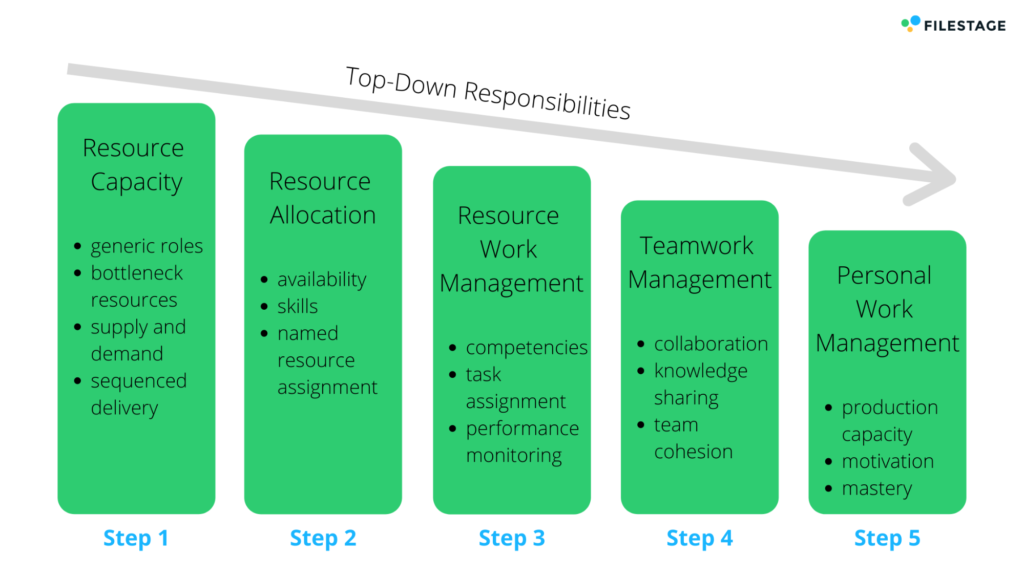
Step 1: Resource capacity
First, you will need to get an overview of all available resources for the marketing function and find out how they are currently being utilized. You can make use of existing resource allocation reports. But if they are not available, you can create them yourself via resource allocation templates and Gantt charts.
Furthermore, you need to think about the most critical bottlenecks within your function. Which processes cause the biggest problems? And which ones take too much time or are just inefficient, but were previously ignored? These pain points can be multitudinous. They may include these kinds of questions:
- Why do new product renderings take so much time?
- Why do product managers wait so long for feedback?
- Are there issues with distributing the content globally?
- Are your company’s guidelines being followed throughout the entire organization, including different markets?
This long list may differ from large companies to smaller ones. While the first step aims at getting a bird’s eye view of your function, the following steps aim at reallocating your resources. Therefore, it is crucial to fully understand all bottlenecks within the function.
Steps 2 and 3: Resource allocation and resource work management
After you have located all bottlenecks that threaten or delay important milestones of a project, you need to think of ways to streamline these workflows. One good way to get rid of a bottleneck is called “resource leveling”. This tactic makes use of the hidden knowledge within each employee of the marketing function.
Here’s an example: If the design function cannot keep up with marketing’s demands, some visual assets might be created by marketing colleagues with basic graphic design knowledge. This effort would relieve the design function, so your team can concentrate on more critical tasks.
Step 4: Teamwork management
While step two aims at reallocating certain roles and responsibilities within a workflow, it is of crucial importance to equip every team member with the right MRM software. Then you can make the collaboration process as smooth as possible. With the right MRM software, a team can communicate efficiently, reduce bottlenecks, and share knowledge and assets within and across organizations. Later on, we are going into more detail about what type of software you should use to support your function.
Step 5: Personal work management
While teamwork management aims at streamlining processes across team members within and across different functions, the goal of personal work management is to motivate and educate individuals. This step can be combined with the resource leveling approach described above.
To continue the example above, utilizers of the marketing function can easily obtain basic Photoshop skills, in order to create video thumbnails or social media posts. Managers should create these opportunities if the result is saved time or higher output. Obviously, it should be clear that resource leveling only makes sense if the additional responsibilities do not distract team members from fulfilling their main tasks.
What to look for in an MRM software
There are several MRM platforms available, and it can be difficult for marketing professionals to pick the right MRM tool for their needs. Here are some key features to look for in a marketing resource management software:
Seamless integration with other solutions
A great MRM tool must seamlessly integrate with other solutions like digital asset management (DAM), product information management (PIM), and media asset management (MAM).
DAM helps manage all digital assets like guides for brands. PIM is used to house all information about a product like description, color, and dimension. MAM solution is used to store multimedia files like audio and video.
Sophistication
Any MRM tool you choose should offer budgeting tools, workflow visualizer, planning features and media mix optimization that meets brand standards.
Easy to use
Pick MRM tools that are intuitive and easy for you and your team to use. There is no point in paying for an expensive MRM technology that is complex and requires hours of training.
Best marketing resource management solutions
The best marketing resource management solution will provide insight, clarity, and a total view of all marketing activities. MRM technology helps you streamline all your marketing programs, support your team with the resources they need and boost your marketing campaigns.
Here are some MRM platforms for you to choose from.
BrandMaker
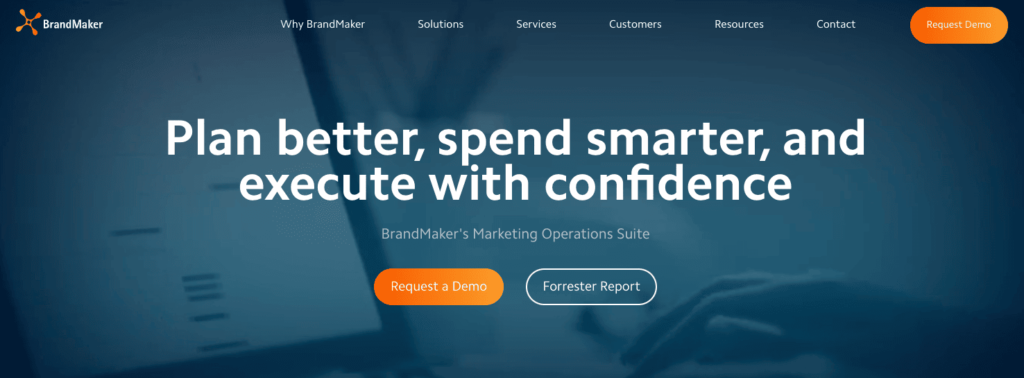
BrandMaker is a complete MRM software that facilitates the resource measurement and planning process by offering multiple functions for budget planning and management. Marketers can keep track of each individual’s spending, which makes the ROI easily traceable and protects marketing investments.
Moreover, Brandmaker has various DAM software features, such as an asset library with distribution functions. BrandMaker is a good choice for planning and executing a thorough MRM strategy, but it lacks important content creation features, such as the support of video files.
- A thorough MRM software with a focus on resource planning and tracking
- Includes multiple DAM features
- Some content types (such as videos) are not supported
MarcomCentral

MarcomCentral is a mix of a DAM and marketing asset management (MAM) solution that helps create assets that adhere to established guidelines. You can achieve brand compliance by setting up automatic expiration notifications.
In addition to marketing resources that can be stored, managed, and distributed, MarcomCentral helps streamline the approval workflow for better marketing operations. Besides, MarcomCentral does not have many features that support the planning stage of an MRM strategy.
- DAM features to store and distribute marketing assets
- Intuitive storage and search function
- Not many planning features, such as budgeting tools
Intelligencebank
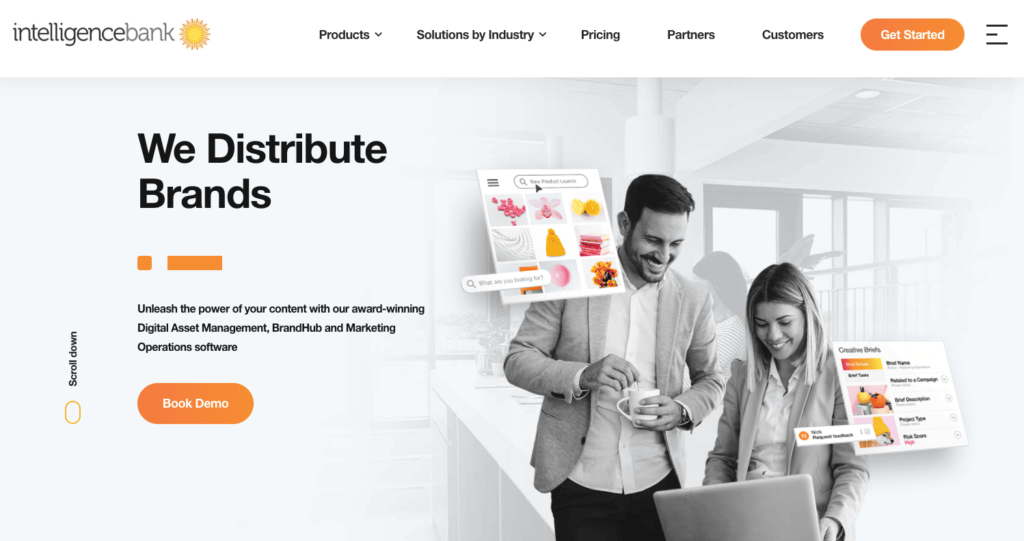
Intelligencebank can be categorized into three main components: DAM, BrandHub Portal, and MRM solution. With DAM, users can store, manage, and distribute digital assets, while the BrandHub Portal increases brand consistency via custom-made brand guideline pages and workflow approvals. The marketing operations software of Intelligencebank allows users to manage budgets, briefs, content, and schedules and helps distribute finished content to multiple outlets.
- Combines DAM with BrandHub Portal and MRM software
- Modular software approach
- It’s pricey to get most of the features into one bundle
Filestage – helps you save time
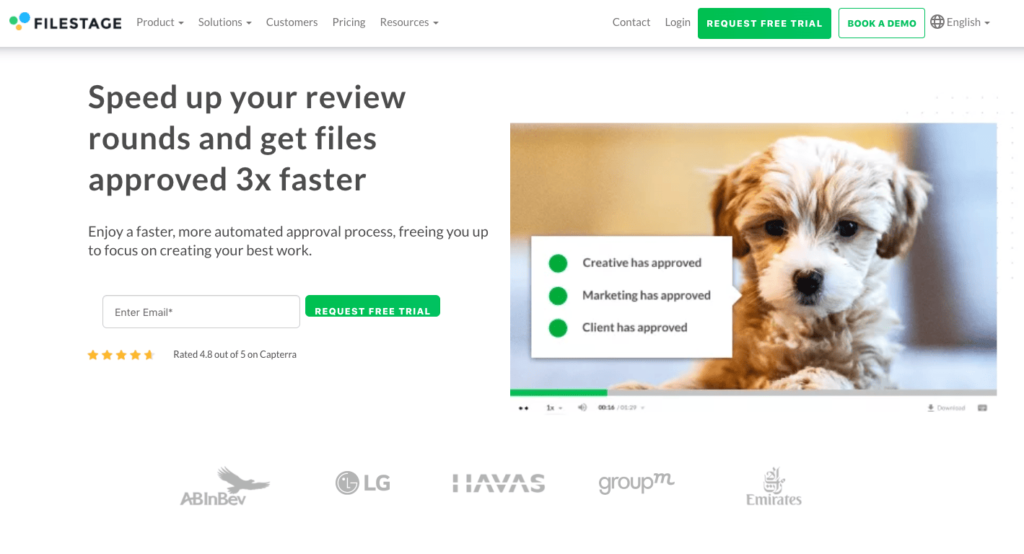
In marketing, every team member needs to give or collect feedback on content at some point. But chasing people for feedback over emails can be very time-consuming. Filestage makes the review and approval process of files easy, fast, and efficient for everyone involved.
The tool helps streamline the content management and creation process by offering one single collaboration platform. Here all participating parties can easily share, review, discuss, and approve all content types, including text, images, and videos. Further, Filestage offers advanced marketing project management features such as setting due dates, automatic version control, and reminders.
Two MRM case studies examples from big brands
From theory to practice: In the following section, we are going to show you two successful real-world case studies of marketing resource management in action.
Bayer – ensuring global brand compliance through MRM

As a global player, Bayer needed to align several subgroups within the brand, in order to operate under the same brand guidelines. Brands like Bayer, who operate in the highly-regulated pharma and healthcare industry, need to put a special emphasis on a unified branding approach, as non-compliance can result in serious consequences. Bayer decided to consolidate all brand assets into one platform so that all global subgroups could access the latest resources. This results in significant savings (time and cost) for the global brand and all subgroups involved.
Under Armour – improved media coverage through MRM

Under Armour is a global sports apparel brand that produces tons of marketing collateral, which needs to be shared with 400 team members across five global locations. Previously, Under Armour did not use any MRM software. Therefore, team members could never be sure whether the shared files contained the most recent versions.
Thanks to an MRM tool, Under Armour was able to centralize all final brand assets. The company started using the same platform to distribute its assets to the media with the launch of the UA HealthBox at the Consumer Electronics Show (CES). As a result, the product won over twenty CES awards during its debut.
Conclusion
After having internalized all information, it is important to remember that marketing resource management should be regarded as a continuous process, instead of a one-time task. Resources change constantly. So to be utilized to their full potential, they need creative, out-of-the-box thinking and a systematic approach.

